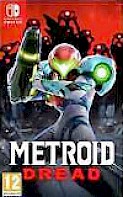Review: Metroid Dread

Posted 16 Oct 2021 at 18:30 by João Pereira
It is here. After what felt like an eternity, the Metroid saga, a series that named an entire genre, has returned to the spotlight once again. It seems nobody at Nintendo has been able to handle the series’ 2D roots since 2004… not until one courageous Spanish developer, Mercury Steam, dared to accept this mission. After taking Samus Aran for a test drive of sorts in a remake for the 3DS (Metroid: Samus Returns), they earned the right to properly tackle the next official chapter in the story: Metroid Dread.
But if we’re being honest… the industry has evolved a lot since 2004. The Indie scene is far more prevalent these days, and it is filled – borderline saturated – with newer Metroidvanias, with dozens of titles in this genre bringing their own unique takes and ideas, many of which quite successful. With that in mind, does Metroid Dread have what it takes, not just to stand out, but to justify its status as a fully priced major release on an HD console?
Perhaps it is sensible to start with the fundamentals. Samus controls really well in this game. As per usual, she can run, jump, and shoot in various directions, now with more precision than ever (by aiming in virtually any direction with the analog stick, standing your ground with the L shoulder button if need be), but she can do so much more from the get go. She can slide while dashing, climb short ledges really quickly, and even wall-jump fairly easily. And that’s just the beginning.
The controls are incredibly responsive, and you’ll soon find yourself moving at such a fast pace, it feels like the game just flows by itself. This is, pardon the expression, the smoothest Samus in the series yet. In that sense, it is a true evolution, as no other Metroid feels or plays as nicely as this.
It certainly helps that the game moves at a consistent 60 FPS, with not a single hiccup in sight in about 10 hours of playtime, not even while in handheld mode. Like a waking dream.
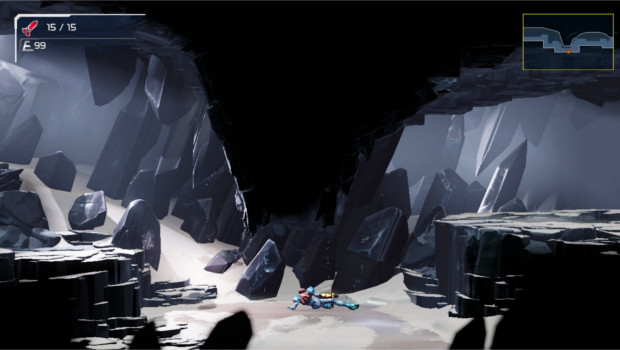 The ground is full of gravel, but it feels like silk.
The ground is full of gravel, but it feels like silk.
Shooting enemies is your main form of combat for sure, but there is a form of close combat as well: the “Melee Counter”, first introduced in Samus Returns, further perfected in Dread. Some enemies, being particularly aggressive, will lunge at Samus to attack, but with a well-timed counter, you can whack’em away and even earn some extra health drops in the process. If you wish to take the fight to them, you can even do a running variant called “Dash Melee” that will damage enemies regardless.
When you combine these moves with the more traditional Metroid arsenal (such as the Missiles) and Samus’s impeccable agility, you will find that the combat variety in Metroid Dread is as large as the amount of enemies and rooms. It is quite rewarding, learning how to efficiently kill the vicious wildlife in this planet, especially when you consider how often you’ll move through these layouts, and the amount of items and options you’ll gain as you progress.
…But what is this about the planet? Where is Samus, exactly? Dread’s story begins with a mysterious video sent to the Galactic Federation: a remnant of the X-Parasite may exist in planet ZDR. Those who played Metroid Fusion will recognize the X-Parasite as a terrifying virus creature that copies other lifeforms in grotesque ways (much like John Carpenter’s The Thing). In response, the Federation sends a group of highly capable robots called E.M.M.I. to investigate the matter, but they soon disappear. With no other option, they must hire Samus Aran to investigate the matter.
(Despite this continuity-heavy setup, the plot in this game stands fine on its own, and is fairly easy to follow for series newcomers, so don’t feel deterred)
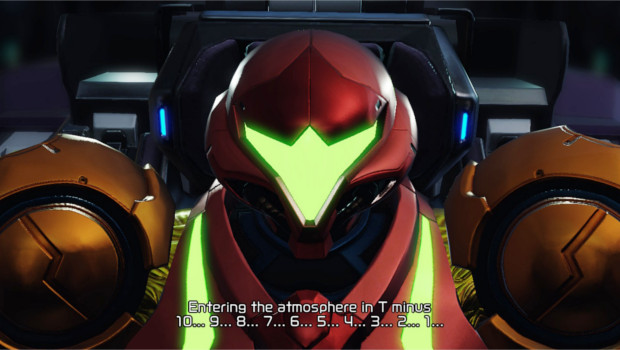 At any rate, this is an accurate depiction at the fans' excitement.
At any rate, this is an accurate depiction at the fans' excitement.
Once the game proper starts, story progression is done with occasional, mostly wordless cutscenes, which certainly manage to convey the desired tone and atmosphere, offer solid characterization for Samus herself, and even give you gameplay hints. Despite the shift towards cinematic experiences in videogames, this focus on visual storytelling is still surprisingly rare in the industry, so it is great to see this kind of direction being used for Dread’s cutscenes.
Despite this, there are also frequent “Briefing” moments with plenty of text, but these serve more to gather one’s bearings, or add further context to any given event. And more importantly, offer specific gameplay advice regarding nearby obstacles, items, or general navigation through the world map.
It is not just the cutscenes that resort to visual storytelling, as the backgrounds in this game are rife with detail. From harmless insects crawling among the rocks, to broken machinery sparking about, even some ruined architecture that hints that the layout in the area used to be very different… and sometimes, as you’re going back and forth through the hallways, you might even see something that wasn’t there before...
It all comes together to create a very effective creepy atmosphere. As is usual for Metroid, you always feel like you’re slowly uncovering something you’re not sure you want to find out. With Dread in particular, the effect is enhanced when playing in handheld mode in the dark. The sound design also provides enough creepy murmuring just to remind you that you likely aren’t alone.
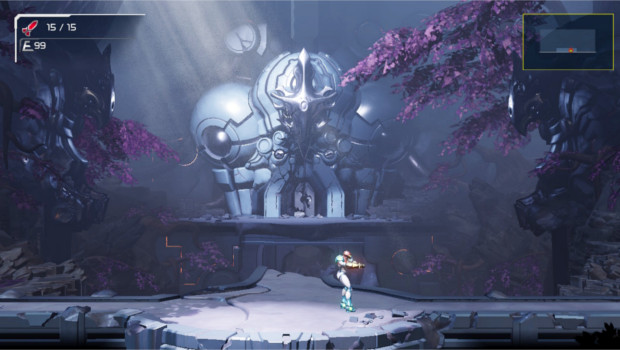 This scenery tells a story, and that fills me with... dread.
This scenery tells a story, and that fills me with... dread.
Speaking of which, while the eerie music fits each area just fine… I can’t help but notice how forgettable it is. In fact, the only memorable tracks in this game are lifted from previous entries in the series (and are basically only used during cutscenes). One does not need to sacrifice a good composition for immersion when it comes to music, and yet it feels like this is what happened in Dread. It is a shame, as this is one of the few aspects of the game that feels underwhelming. Listening to the music afterwards, it’s even difficult to remember which tune is associated with each area.
That’s not the fault of the game’s aesthetic design or anything, because each area actually looks and feels very memorable. Plus, continuing with the overall theme of visual conveyance, a lot can be gleamed from each room at first glance, like its overall layout, general hints for breakable blocks, important room properties (like excessive heat)… You can attribute some of it to the amount of visual detail, but more often, it’s just clever use of colour, enemy placement, and an understanding of where the player’s eyes will dart to (though to be fair, some important details may be too difficult to see in handheld mode, such as vents with foreground elements).
MercurySteam has done a great job in designing a map that feels easy to explore, without ever feeling like the player’s hand is being forced. Despite Metroid being famous for its open-ended worlds and sometimes unclear directions, its level design always contains an intended true path through the maze, and Dread is no exception. In fact, Dread is actually quite linear. The catch is that it’s never too obviously so, as the game never forces you through its intended path, rather, it only nudges you ever so softly in its general direction, trusting the player to find out how to follow it. It’s all very intuitive, and if you ever feel stuck, I assure you that a path forward will soon appear to you.
Ironically, the map itself might be harder to read than to navigate. The menu provides a lot of information and options (zooming in and out, figuring out what each symbol means, highlighting specific parts, putting personalized markers on the maps, etc.), and that can be overwhelming, but I found it to be a matter of getting used to it.
Just be careful for the times this design points towards the E.M.M.I. domains.
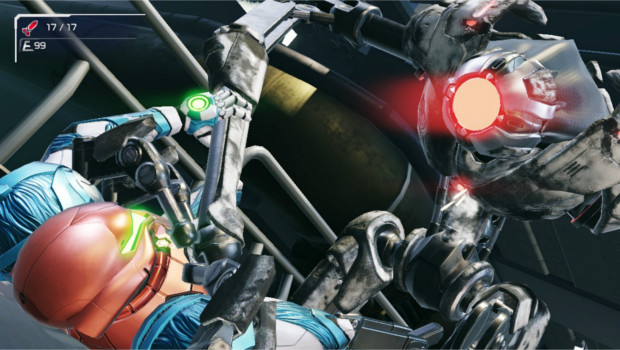 ~And while you're dying, I am still alive!~
~And while you're dying, I am still alive!~
Alright, we all were expecting it. The E.M.M.I. have actually gone rogue, and instead of searching for the alleged X, they’re hunting Samus. Previous enemies in Metroid have taken inspiration from sci-fi horror films, such as Alien or The Thing, and now it is the turn of Red Planet – and its vicious robot AMEE – to enter Metroid lore.
Each E.M.M.I. patrols their local turf, and the moment they hear Samus, they dart towards her. If they see her, it’s code red, and the pursuit is imminent. If they catch her, she is dead. Normally, Samus would be able to fight back… but the E.M.M.I. are nigh-indestructible. Whelp.
The E.M.M.I. sections are very tense. The moment you enter them, the environment acquires this cold, sterile, black&white look to them that leaves you uneasy. When the E.M.M.I. approaches, their robotic beeps and the slight static in your ears leaves you stressed. When they see you, the resulting chase leaves you frantic. Unless you can find a safe spot, that robot will catch you, and the only shot at an escape is an extremely well timed Melee Counter (and since the timing isn’t consistent, this is not an option you can rely on).
You’d think these moments would prioritize stealth above all, and while that’s true, this is not the usual “walk slowly around the guards” kind of stealth (and especially not the “ignore your entire equipment for just this section” kind of stealth). Rather, the game expects you to take advantage of Samus’s moveset and arsenal to run around the layout and stay one step ahead of E.M.M.I., away from their sights. If they see you, you must flip, slide, and dash as often as need be to find safe haven (and it is quite satisfying to bamboozle an E.M.M.I. with a wall jump). It is more a parkour chase than quiet sneaking, and it is done quite well.
These E.M.M.I. are actually quite smart. Their pathfinding skills are very good, and it is hard to lure one into behaving the way you want them to. Most impressive is when they’re the ones trying to sneak around you, and grab you when you least expect it. In fact, if you think you'll get used to their behaviour with enough practise, I must tell you otherwise, as these encounters will be getting progressively harder (and more creative) as the game goes on.
Despite all of this, I’m not sure if I’d classify these segments as “Horror”. When you get caught by an E.M.M.I., you respawn fairly quickly, and never too far. While this mitigates frustration (and it can’t help you cheese any of these segments, anyway), it does mean that these segments can lose their emotional impact surprisingly quick.
With that in mind, I believe it’s more accurate to use the term “Thriller”, the sort that brings a lot of short, intense moments and frights. If you were hoping for slow buildup and spine-tingling shivers, Metroid Dread may sadly not quite be the Halloween game for you. Samus is too headstrong, too stylish for that.
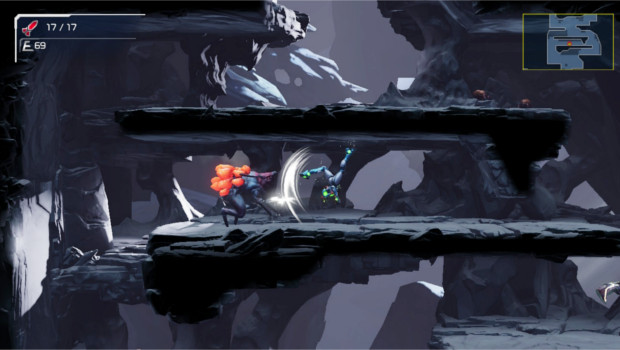 This party's getting crazy!
This party's getting crazy!
Indeed, stylish is the right word, because Dread is considerably fast-paced, and I would certainly say that the game shines brighter during action sequences. It feels really good to fire each of your weapons, dodge a few tricky attacks, and counter the one that matters. The great sound design also applies to your weapons, making each shot satisfying to land.
Furthermore, as part of MercurySteam’s attention to detail, Samus seems to have an animation for everything. She’ll land differently depending on how she jumped, she will Melee Counter with her feet if you do it while sliding, she can fire (and even shinespark) backwards, and even during quiet moments, she’ll react to walls or ledges you run into. Heck, there’s even different animations for when you get caught by an E.M.M.I., depending on how off your Counter timing was.
And then there’s the bosses. The Metroid series is certainly famous for its momentous, imposing, memorable bosses, and Dread manages to live up to that legacy, while including its own spin on things. I’m no fan of QTEs or scripted sequences, but the way they are implemented here is perfect, and even rewarding.
Not to say that pulling off these cool moments is easy, mind you. Metroid Dread pulls no punches, whether you are facing a big boss, a relentless E.M.M.I, or just a particularly difficult gauntlet. Thankfully, this is the sort of challenge that feels fair, and always possible to overcome with some practise. There aren’t any frustrating elements that feel out of the player’s control.
…Well, with one odd exception: most new usable items in Metroid Dread are usually assigned to a specific button or button combination (you don’t switch between weapons from a menu or anything like that), which means that every button in your Joy-Con or Pro Controller will find its use eventually. This is an elegant control scheme for the majority of the game, but as you gain more and more upgrades for your suit, you will soon find out that it may actually be hard to remember your moveset! Pulling off three different moves/items in quick succession can really easily trip you up, even during exploration segments. All things considered, it’s a minor hiccup on an otherwise solid system, but it is worth keeping in mind.
There is also one hidden elephant in this room that must be addressed: sequence breaking. Metroid games are simultaneously known for well-thought level design, as much as they are known for the ability to absolutely break it. It’s the sort of unexpected depth that rewards those who want to get better or learn more about each game, as well as adding limitless replayability to them. And the good news is, Metroid Dread has them. Better even, they’re unlikely to be patched out. Time will tell how much all of this will add the overall experience, but I can say right now, there’s at least one Easter Egg in this game, put by the developers, for those who obtained certain items earlier than they were supposed to.
N-Europe Final Verdict
Metroid Dread is a spectacular entry in the Metroid franchise, and it excels in almost every aspect that matters. It manages to stay true to the series’ core tenets, while still adopting a strong identity all its own. Whether you’re a longtime fan or a newcomer looking to discover the series, Metroid Dread will not disappoint. Any objections?
- Gameplay5
- Playability5
- Visuals5
- Audio4
- Lifespan5
Final Score
10
Pros
Silky smooth gameplay
Combat is fun and rewarding
Strong atmosphere
Excellent boss fights
Subtle level design
Progress comes at the right pace
Cons
Original music tracks are forgettable
Too many buttons may trip you up


